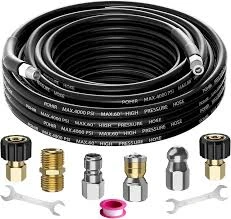Understanding Power Steering Hoses and Lines for Optimal Vehicle Performance
Understanding Power Steering Hoses and Lines Essential Components of Your Vehicle
Power steering systems have become a critical component in modern vehicles, enhancing the driving experience by allowing for smoother and more manageable steering. Among the various components that contribute to the efficiency of power steering systems, power steering hoses and lines play a pivotal role. Understanding the functions, maintenance, and issues related to these components can help you ensure your vehicle performs optimally.
What Are Power Steering Hoses and Lines?
Power steering hoses and lines are essential parts of the hydraulic power steering system in your vehicle. These components are responsible for transporting power steering fluid from the pump to the steering gear, allowing for the effortless steering you appreciate while driving. The system operates by generating hydraulic pressure that assists in turning the steering wheel, reducing the effort needed by the driver.
There are generally two types of power steering hoses the high-pressure hose and the low-pressure return hose. The high-pressure hose carries fluid from the power steering pump to the steering gear under intense pressure, usually ranging between 1,000 to 1,500 psi. On the other hand, the low-pressure return hose carries the fluid back to the pump or reservoir after it has assisted in steering.
Importance of Quality Power Steering Hoses and Lines
The integrity and quality of power steering hoses and lines are crucial for the proper functioning of the power steering system. Over time, these components are subjected to heat, pressure, and various environmental factors, all of which can lead to wear and tear. High-quality hoses are typically made from durable rubber or reinforced materials to withstand these conditions.
When you invest in high-quality power steering hoses and lines, you reduce the risk of leaks or ruptures that can compromise the system. A failure in this area not only affects steering but can lead to more significant issues, including steering gear failure, which can be costly to repair.
Common Issues with Power Steering Hoses and Lines
Several common problems can arise with power steering hoses and lines
1. Leaks One of the most frequent issues is the development of leaks. A damaged or worn hose can cause fluid to escape, leading to low power steering fluid levels. This results in increased steering effort, making the vehicle more difficult to maneuver.
power steering hoses and lines

2. Cracks and Bulges Over time, the rubber material of the hoses can degrade, leading to cracks or bulges. If you notice any irregularities on the surface of the hoses, it is essential to address them promptly to prevent further damage.
3. Swelling In some cases, hoses may swell due to the heat generated by the engine or the pressure of the fluid inside. Swollen hoses can restrict fluid flow, negatively impacting steering performance.
4. Corrosion Metal lines, if present, can corrode over time, especially if exposed to elements like moisture or salt. Corrosion can cause blockages or leaks, similar to those seen with hose failures.
Maintenance and Care Tips
To keep your power steering hoses and lines in good condition, regular maintenance is key. Here are some tips to help ensure longevity and reliability
1. Regular Inspections Periodically check your hoses and lines for any signs of wear or damage. Look for leaks, cracks, and swelling, and replace any compromised components promptly.
2. Check Fluid Levels Monitor your power steering fluid levels. If you frequently find the fluid is low, it may indicate a leak in the hoses or lines that needs addressing.
3. Use Quality Fluids Always use manufacturer-recommended power steering fluid. Using the wrong type can adversely affect the viscosity of the fluid and lead to failures in the hoses and lines.
4. Professional Assistance If you're unsure about the condition of your power steering hoses and lines, seek professional advice. Regular maintenance from a qualified mechanic can help identify issues before they escalate.
Conclusion
Power steering hoses and lines are vital components of your vehicle's steering system, playing an essential role in providing you with a smooth and effortless driving experience. By understanding their significance, common issues, and maintenance needs, you can help ensure that your power steering system remains in optimal working condition. Investing time in regular checks and care will not only enhance your vehicle's performance but also contribute to safer driving. Always remember that when it comes to vehicle maintenance, proactive measures yield the best results.
-
Ultimate Spiral Protection for Hoses & CablesNewsJun.26,2025
-
The Ultimate Quick-Connect Solutions for Every NeedNewsJun.26,2025
-
SAE J1401 Brake Hose: Reliable Choice for Safe BrakingNewsJun.26,2025
-
Reliable J2064 A/C Hoses for Real-World Cooling NeedsNewsJun.26,2025
-
Heavy-Duty Sewer Jetting Hoses Built to LastNewsJun.26,2025
-
Fix Power Steering Tube Leaks Fast – Durable & Affordable SolutionNewsJun.26,2025

